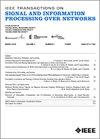A Novel Asynchronous Intermittent Control Approach for Distributed Consensus of Multi-Agent Systems With Output Delays
IF 3
3区 计算机科学
Q2 ENGINEERING, ELECTRICAL & ELECTRONIC
IEEE Transactions on Signal and Information Processing over Networks
Pub Date : 2025-09-04
DOI:10.1109/TSIPN.2025.3604657
引用次数: 0
Abstract
In this paper, a novel boundary-dependent asynchronous intermittent control scheme is proposed to realize the distributed consensus of multi-agent systems with output delays. Different from most works on intermittent control, this intermittent mechanism allows each agent to asynchronously adjust the intermittent time according to their actual control needs. In this intermittent mechanism, the non-negative real area is divided into three sub-regions through two boundary lines (safety boundary and intermittence boundary) to detect the error states of each agent, and a new intermittent mode is presented to arrange work period and break period by the detected real-time error states. By developing the distributed cascade compensator, a novel intermittent distributed cascade consensus mechanism is designed to ensure that all the agents achieve leader-following consensus. Compared with the current time-dependent mechanisms, the proposed boundary-dependent intermittent control mechanism can adjust work and break periods of each agent asynchronously according to the application needs, under which the multi-agent systems can tolerate more break period and reduce the communication frequency. Finally, numerical simulations are performed to verify our results.一种具有输出延迟的多智能体分布式一致性异步间歇控制方法
为了实现具有输出延迟的多智能体系统的分布式一致性,提出了一种新的边界依赖异步间歇控制方案。与大多数间歇控制工作不同的是,这种间歇机制允许每个agent根据自己的实际控制需要异步调整间歇时间。在该间歇机制中,通过两条边界线(安全边界和间歇边界)将非负实测区划分为三个子区域,检测每个agent的错误状态,并提出了一种新的间歇模式,根据检测到的实时错误状态来安排工作时段和休息时段。通过开发分布式级联补偿器,设计了一种新型的间歇性分布式级联共识机制,以确保所有智能体都能达到leader-following共识。与现有的时间依赖机制相比,所提出的边界依赖间歇控制机制可以根据应用需要异步调整各agent的工作和中断时间,从而使多agent系统能够容忍更多的中断时间,降低通信频率。最后,通过数值模拟验证了本文的研究结果。
本文章由计算机程序翻译,如有差异,请以英文原文为准。
求助全文
约1分钟内获得全文
求助全文
来源期刊

IEEE Transactions on Signal and Information Processing over Networks
Computer Science-Computer Networks and Communications
CiteScore
5.80
自引率
12.50%
发文量
56
期刊介绍:
The IEEE Transactions on Signal and Information Processing over Networks publishes high-quality papers that extend the classical notions of processing of signals defined over vector spaces (e.g. time and space) to processing of signals and information (data) defined over networks, potentially dynamically varying. In signal processing over networks, the topology of the network may define structural relationships in the data, or may constrain processing of the data. Topics include distributed algorithms for filtering, detection, estimation, adaptation and learning, model selection, data fusion, and diffusion or evolution of information over such networks, and applications of distributed signal processing.
 求助内容:
求助内容: 应助结果提醒方式:
应助结果提醒方式:


